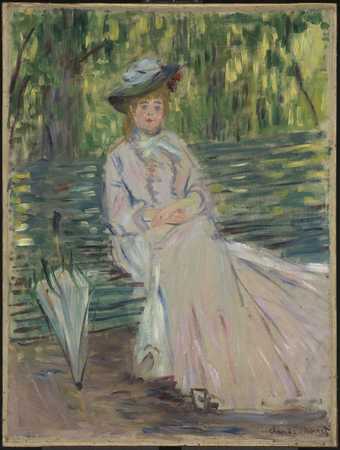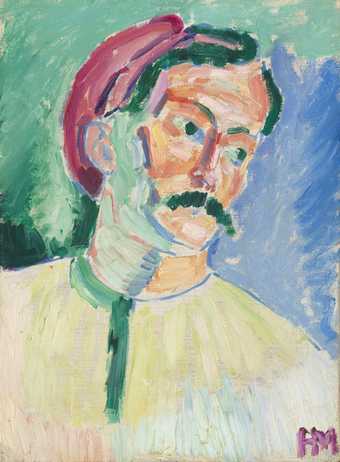
Claude Monet
Woman Seated on a Bench (c.1874)
Tate

James Dickson Innes
Arenig, North Wales (1913)
Tate

Henri Matisse
André Derain (1905)
Tate
In colour theory complementary colours appear opposite each other on colour models such as the colour wheel. The colour complement of each primary colour (primaries are red, yellow and blue) can be obtained by mixing the two other primary colours together. So the complementary of red is green (a mix of yellow and blue); the complementary of blue is orange (a mix of red and yellow); and the complementary of yellow is violet (a mix of red and blue).
Artists began to become particularly aware of the significance of complementary colours after the development of scientific colour theory in the nineteenth century. This theory played an important part in the development of impressionism and post-Impressionism as well as fauvism and much modern painting thereafter. The impressionists were the first to note that shadows are not neutral but are the complementary colour of the light that throws them. So yellow sunlight throws a violet shadow. This can be seen very well in Claude Monet’s Woman Seated on a Bench in the crease of her arm and the pool of shadow at her feet.
